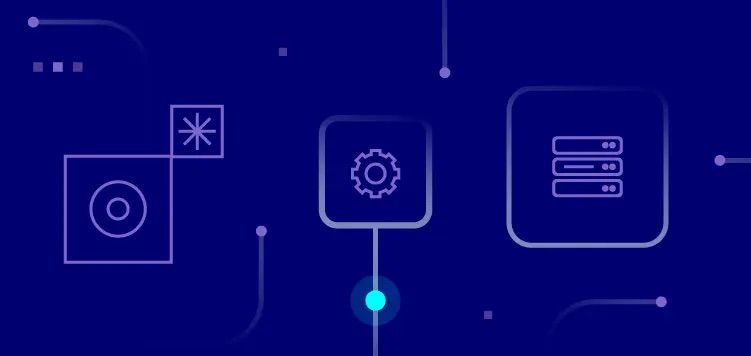Data engineering is an ever-evolving, fast-paced space that requires the use of various technologies to build efficient, modern data pipelines. Data engineering technology stack includes programming languages and frameworks like Python and Apache Spark, data stores like SQL databases, big data storage systems such as Hadoop and NoSQL databases, message queuing systems such as Kafka and RabbitMQ, machine learning models, and cloud services such as Amazon Web Services (AWS) or Microsoft Azure. By leveraging the different tools within the stack organizations can improve their efficiency in handling large amounts of data quickly and securely.

Table Of Content:
- The New Data Engineering Stack. Technologies for the Complete ...
- What is the must-have tech stack for a data engineer? - Quora
- Is the Modern Data Stack Leaving You Behind? - KDnuggets
- Top 10 Tools for Data Engineers – The New Stack
- How The Modern Data Stack Is Reshaping Data Engineering | Preset
- The Modern Data Engineer Stack : r/dataengineering
- How to become a Full-Stack Data Engineer ?
- What Is Data Engineering? Responsibilities & Tools | Dremio
- Analytics Engineering vs Data Engineering | RudderStack Blog
- 3 Engineers' Perspectives on the Modern Data Stack - Seattle Data ...
1. The New Data Engineering Stack. Technologies for the Complete ...
https://towardsdatascience.com/the-new-data-engineering-stack-78939850bb30 Jul 22, 2021 ... Data Engineers are expected to know their infrastructure now. This means that whatever stack they are using, they should resolve operational ...
Jul 22, 2021 ... Data Engineers are expected to know their infrastructure now. This means that whatever stack they are using, they should resolve operational ...
2. What is the must-have tech stack for a data engineer? - Quora
https://www.quora.com/What-is-the-must-have-tech-stack-for-a-data-engineer
Etl tool (informatica, talend) · Database and sql (Oracle, greenplum, teradata) · Big data technologies ( HDFS,hive, sqoop, pig, Hadoop, spark ) · Cloud infracture ...
3. Is the Modern Data Stack Leaving You Behind? - KDnuggets
https://www.kdnuggets.com/2021/11/modern-data-stack-leaving-behind.html Nov 1, 2021 ... The modern data stack for data engineering is focused on giving data engineers the tools they need to build more complex data products in a way ...
Nov 1, 2021 ... The modern data stack for data engineering is focused on giving data engineers the tools they need to build more complex data products in a way ...
4. Top 10 Tools for Data Engineers – The New Stack
https://thenewstack.io/top-10-tools-for-data-engineers/ Apr 6, 2021 ... 1. Python. Python is a popular general-purpose programming language. · 2. SQL. Querying is the bread and butter for all data engineers. · 3.
Apr 6, 2021 ... 1. Python. Python is a popular general-purpose programming language. · 2. SQL. Querying is the bread and butter for all data engineers. · 3.
5. How The Modern Data Stack Is Reshaping Data Engineering | Preset
https://preset.io/blog/reshaping-data-engineering/ Oct 31, 2021 ... Given this trend, new needs are emerging for data engineering teams: procurement: researching technologies and vendors, evaluating compliance ...
Oct 31, 2021 ... Given this trend, new needs are emerging for data engineering teams: procurement: researching technologies and vendors, evaluating compliance ...
6. The Modern Data Engineer Stack : r/dataengineering
https://www.reddit.com/r/dataengineering/comments/hblptw/the_modern_data_engineer_stack/ Jun 18, 2020 ... The Modern Data Engineer Stack · optimized for technical skillsets of the 1990s: SQL, java, on-prem, etc · tend to involve gui-driven development ...
Jun 18, 2020 ... The Modern Data Engineer Stack · optimized for technical skillsets of the 1990s: SQL, java, on-prem, etc · tend to involve gui-driven development ...
7. How to become a Full-Stack Data Engineer ?
https://www.linkedin.com/pulse/how-become-full-stack-data-engineer-rahul-jain
8. What Is Data Engineering? Responsibilities & Tools | Dremio
https://www.dremio.com/resources/guides/data-engineering/ Dremio makes data engineers more productive, and data consumers more self-sufficient. Additional Resources. Data Engineering Modern Cloud Technology Stack. In ...
Dremio makes data engineers more productive, and data consumers more self-sufficient. Additional Resources. Data Engineering Modern Cloud Technology Stack. In ...
9. Analytics Engineering vs Data Engineering | RudderStack Blog
https://www.rudderstack.com/blog/analytics-engineering-vs-data-engineering Apr 5, 2022 ... These foundational technologies have also given rise to new tools that are coming out and leverage the Modern Data Stack like: Reverse ETL; Data ...
Apr 5, 2022 ... These foundational technologies have also given rise to new tools that are coming out and leverage the Modern Data Stack like: Reverse ETL; Data ...
10. 3 Engineers' Perspectives on the Modern Data Stack - Seattle Data ...
https://www.theseattledataguy.com/3-engineers-perspectives-on-the-modern-data-stack/ Apr 5, 2021 ... But they don't have the headcount or the technical expertise to do both software engineering and data engineering. That's the problem we set ...
Apr 5, 2021 ... But they don't have the headcount or the technical expertise to do both software engineering and data engineering. That's the problem we set ...
What is data engineering?
Data engineering is a branch of software engineering focused on storing, transforming, managing and analyzing large amounts of raw data. It involves using various technologies to ensure that the data collected is reliable, accurate and efficient for use in further development.
What are some components of a data engineering technology stack?
A typical data engineering technology stack may include programming languages such as Python or R;data stores such as SQL databases or NoSQL; big data storage systems like Hadoop or Cloud services such as AWS or Microsoft Azure; message queuing systems such as Kafka or RabbitMQ; machine learning models; automation tools for running analytics pipelines; and other software tools designed to simplify development processes related to collecting, transforming and analyzing data.
How can a company benefit from using a comprehensive data engineering technology stack?
Companies that leverage a comprehensive system of tools in their technology stack can help them gain insights from their large datasets faster than traditional methods would allow. Additionally it can improve operational efficiency by ensuring clean input/output streams (data ingestion/transformation) while also providing more accuracy through automated tests. Finally it can simplify deployment process by offering scalability options for deploying applications across multiple cloud services provider (AWS or Azure).
What are advantages to leveraging open-source technologies within the stack?
Open source technologies provide many advantages when included in your tech stack. Some benefits include cost savings compared to licensed products (in most cases); access to larger developer communities with extensive knowledge in use cases ranging from enterprise level solutions to smaller web applications; flexibility in customizing your tech stack specific needs based on changes/evolutions on the market needs; streamlined development process due to its open nature which allows for easier collaboration efforts between teams working with different technologies without having too many integration issues.
Conclusion:
Data engineering requires the combination of different tools within its tech stacks needed to create effective solutions for collecting, transforming, managing and analyzing large amounts of raw data. By utilizing both open-source ecosystems together with licensed solutions companies are able to leverage this synergy for creating powerful analytics that will enable them to make better decisions faster than ever before allowing them improved agility while improving operational efficiency at same time.
